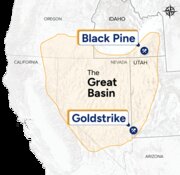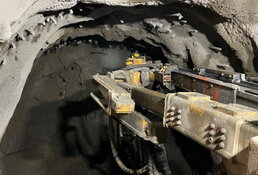The Gold Report: Ian, you believe that 2013 is likely to be an economic and financial disaster. But you have been saying similar things for years. Why is 2013 likely to be different?
Ian Gordon: Yes, I have been saying similar things for years. However, I know through my work that we are in a longwave winter. The whole purpose of the longwave winter is to cleanse the economy of debt.
The longwave winter began with the stock market peak when the Dow Jones Industrial Average hit 11,750 in January 2000. That was akin to the 1929 stock market peak. Following the 1929 peak, the worst of the longwave winter that followed was over by 1933. Between 1929 and 1933, 10,000 U.S. banks failed, the U.S. stock market lost 90% of its value, U.S. unemployment reached a peak of 25% and U.S. gross domestic product collapsed by 45%.
"The whole purpose of the longwave winter is to cleanse the economy of debt."
This time around, it's been 13 years since the peak and the process of debt elimination hasn't occurred. If anything, we've added to the debt issue. I'm convinced that the worst is still in front of us. We haven't had a catastrophic economic decline that forced massive unemployment rates and collapsed the U.S. banking system. This is the year that is going to occur because I believe there's going to be a major peak in stock prices that is going to start a decline that will be every bit as vicious as the bear market decline between 1929 and 1932. The Federal Reserve Bank has been able to hold back the ravages of winter this time around. It wasn't nearly as active between 1929 and 1933 as it has been during this period.
TGR: Some believe that the Fed and other market manipulators will be able to hold back those ravages in perpetuity until the economy does permanently get on its feet again. Why do you believe they're not likely to succeed?
IG: That's an impossible task because we haven't gotten rid of the debt. Economies function on savings. The purpose of this winter is to get rid of the debt. It appears to be a very benign winter, but we're convinced that all markets are ultimately governed by natural law and that man is powerless to hold back the natural occurrences. What goes up has to come down. We've had an economy that has been rising since 1949. Total worldwide debt is about $200 trillion ($200T). Total debt is the U.S. is about $56T. It has to be washed out. It's going to be very painful during that process.
TGR: If you are correct, one would expect the gold price to climb dramatically in 2013. Won't global governments do all they can to stanch gold's upward momentum?
IG: They've been trying to do that since the late 1950s, when the U.S. set up the London Gold Pool to try and keep the price of gold down to $35/ounce ($35/oz). That was a six-year fiasco where if the price was bubbling above $35, the members of the London Gold Pool sold gold. Eventually, it collapsed because the French, who were 10% of the London Gold Pool, gave up on it.
In the late 1970s, when the gold price was starting to rise, the International Monetary Fund and the U.S. government sold gold to try and hold down the price.
There was no reason to control the price of gold in the 1980s and 1990s because it collapsed.
Then it started to look as if the gold price wanted to bubble again, so that countries like the U.K. were inveigled to sell huge portions of their gold. In 1999, European countries set up the Washington Agreement on Gold that controlled the amount of gold that they could sell.
The gold price has been controlled in the COMEX market. Once the gold price really starts to get away and demand overwhelms that, which I suspect will occur this year, then governments are going to lose control of the gold price through COMEX. The mining industry only produces about 80 million ounces (80 Moz) gold/year. It's a very small amount.
TGR: Do you expect silver to rise in tandem with gold?
IG: I do. As the whole system starts to collapse, as we believe it will in 2013, a huge demand for precious metals is going to develop. Silver will rise in tandem with gold.
"Silver will rise in tandem with gold."
Last year, central banks bought 500 tons of gold, mainly in China and Russia. Central banks are already amassing gold. There will be a time when you won't be able to obtain gold at any price. It will simply be off the market.
Silver, the poor man's gold, will also rise, but I don't believe you're going to see the gold-silver price ratio change that dramatically. Some people are talking about it moving from 50:1 down to 16:1. I don't see that happening because the demand for gold is going to be so massive.
Silver demand will be big, but a major part of the silver price is its industrial component. I'm talking about a huge economic depression, which means that that industrial demand for silver will be vastly reduced.
TGR: Industrial demand will be reduced, but won't monetary demand skyrocket? If gold is trading at a few thousand dollars an ounce, wouldn't most of the planet be unable to afford it?
IG: Most of the planet won't be able to afford it, but the wealthy and the central banks will buy it at any price. As I said, the central banks bought 500 tons last year. They're buying gold right now. The wealthy will continue to buy it.
TGR: Germany recently announced plans to repatriate its gold from U.S. and French banks. What did you make of that move?
IG: It's a small ripple in a big pool because the amount that it is taking back from the New York Federal Reserve is 20% of the German gold held there. But Germany is taking it back over a seven-year period—that makes me suspicious. A lot of people have suggested, and I feel that it's probably true, that the Fed doesn't have the gold that it purports to have because a lot has been lent out. Maybe some of it has been sold to try and suppress the gold price.
TGR: In your research you've quoted Dr. Robert McHugh, who sees a major topping formation in the Dow. He calls it the "jaws of death pattern." Tell us more about that.
IG: Dr. McHugh is suggesting a megaphone pattern. There's the peak in 2000, when the Dow hit 11,750. There's a higher peak in 2007, when the Dow hit 14,200. Now, he's suggesting the third peak, which will be when the Dow hits approximately 15,000. Once we reach that peak, he says that it is the beginning of a multi-century bear market. This bear market, according to McHugh, is one degree worse than the winter bear market in 1929 to 1932. This is going to be a devastating bear stock market.
TGR: In order of magnitude, what is one degree worse?
IG: It's difficult to imagine prices dropping much below the 90% drop experienced between 1929 and 1932, but I think it's going to be greater. I'm quoting about a 93% drop to take the Dow to 1,000. I picked 1,000 because the Dow made 12 attempts to get through 1,000 from 1966 to 1982. That level was a huge resistance level for the Dow. These big resistance points become support points.
TGR: Are you more concerned about the European or U.S. economy?
IG: I'm concerned about all of them. There's too much debt everywhere, and that is overwhelming all the countries.
TGR: Yet you recently returned from Europe where you believe there is still an appetite for junior mining company equities. Why do you continue to be involved with these companies if you see this massive economic collapse approaching?
IG: I have to go back to the previous winter cycle that started in 1929. Once that stock market collapsed, the remaining capital flowed to gold. You can see it in the price of Homestake Mining Co., which appreciated between 1929 and 1936 by 600% with only one increase in the gold price, from $20.67/oz to $35/oz in January 1934.
"I am convinced that the worst of the winter is right in front of us, and that is extremely bullish for gold."
It's been a very hard period for the junior mining sector. Why? Because the general stock market has performed so well. Gold stocks perform well when the general stock market performs very badly.
TGR: Homestake was a gold producer. Most of the companies you're involved with are exploration plays, which are at the high-risk end of the gold equity space.
IG: Capital flowed to the gold mining stocks in the 1930s, particularly into exploration. People wanted to find gold mines. So many of the gold mines that were started were founded by junior mining companies. Take the Abitibi greenstone belt—I was just helping market Temex Resources Corp. (TME:TSX.V; TQ1:FSE), which has three operating mines on the Whitney property that commenced operations in the 1930s. The current Osisko Mining Corp. (OSK:TSX) mine, the Canadian Malartic mine in Quebec, was started in the 1930s. There were probably 200 gold mines that were started in the 1930s here in Canada. According to the U.S. Bureau of Mines, there were 9,000 operating gold mines in the U.S. in 1940. The junior sector was extremely bullish in that period.
TGR: You've been marketing companies in Europe. Is there a greater appetite for gold companies there?
IG: I really do think so. We toured a different city each day. We saw about 120 investors and money managers. In my presentation, I gave the example of a company that came to me in 2001 and asked me to finance it. This company had 1.2 Moz gold in the ground and a market cap of $10 million ($10M). We raised about $1M to finance this company, called Pelangio. It's Detour mine was acquired by Detour Gold Corp. (DGC:TSX). And that tiny $10M market cap has now grown to a $2.75 billion market cap. This is the kind of appreciation that you can have in the junior sector if you get in early enough and buy good management with good assets in safe jurisdictions.
After a meeting we had in Paris, Temex traded 3.5M shares. Investors can buy the company today for $15/oz for the gold it has in the ground. Its two properties are situated in Ontario, along the Abitibi greenstone belt. I think 100 Moz gold have been produced along that belt. Temex anticipates that it will double its gold resources from 2.4 Moz to approximately 5 Moz this year. It's a very well managed company with lots of cash in the bank and it is one of my largest shareholdings.
TGR: When you talked to those investors on the road, what did they tell you? What insight are they giving you into their fears and perspective?
IG: They're worried about the economy. They're worried about the monetary system. They're very worried about the debt and about collapse. You can see it in what people are doing. A friend of mine who is a pretty large investor in the junior mining sector lived in Paris with his wife and two children. When François Hollande became president of France, my friend moved his family to Lucerne, Switzerland. There's big movement of people and their assets to countries where they believe that they are safer.
TGR: Does this give you a feeling of some vindication? You have said before that you feel as if you are the boy who cried wolf and you wonder when people are going to stop believing you.
IG: I think a lot of people don't believe me. But my work is predicated on an understanding of the Kondratiev Cycle. We've taken that cycle far beyond anything Nikolai Kondratiev ever envisioned when he published his work in the mid-1920s. I am convinced that the worst of the winter is right in front of us, and that is extremely bullish for gold.
TGR: What are some companies you're bullish about?
IG: I put out a report in January, Ian's Investment Insights, in which I list my entire portfolio and its performance since 1999. By being invested in these juniors since that time, my portfolio has grown by 47.3% on an annual basis. I've had some terrible times, too. In 2011, the portfolio lost 53% of its value, but overall it has grown by being in the juniors. I only have a dozen positions in this portfolio right now, 11 of which are in the junior mining sector.
I have a fairly significant shareholding in Barkerville Gold Mines Ltd. (BGM:TSX.V), which came out with an NI 43-101 of a massive amount of gold—over 10 Moz. The British Columbia Securities Commission (BCSC) was unhappy with that report and asked for it to be audited by geological consulting group Snowden. That process is ongoing as we speak. I do expect that Snowden will shortly publish its audit of the original NI 43-101 and that Barkerville shares will re-commence trading shortly after the BCSC has approved the report.
TGR: Investors out there holding that equity are probably a bit nervous. Why do you believe they shouldn't be quite as nervous as they are?
IG: I have stated before that I felt that the Barkerville property would host a multimillion-ounce resource. When the NI 43-101 came out, indicating that there was such a resource, I was taken aback. I didn't believe that that initial NI 43-101 would be anything of that magnitude. But the NI 43-101 was done by an accredited geologist. It's going to be very difficult for anyone else checking the geologist's report to find it was materially wrong or that there were massive mistakes made in the compilation of those numbers. It will be difficult to suggest that a) this is a fraudulent report, because I don't believe it is; and b) that there was something grossly inaccurate in compiling the numbers, because I don't think that has occurred either. I'm confident in the numbers, although I expect that the Snowden numbers will be smaller.
TGR: Barkerville has called an annual general meeting for April. When do you think Barkerville will be trading again?
IG: I'm sure Barkerville is confident that it will be trading before the meeting. Hopefully, Snowden's report will be published and the BCSC will lift the cease-trade order forthwith.
TGR: I guess shareholders will keep their fingers crossed. What other companies are interesting to you these days?
IG: I just met with Terraco Gold Corp. (TEN:TSX.V). I have a position in Terraco. I really like the management. It has 1 Moz in Idaho. It also has a fantastic property in Nevada, which borders on Barrick Gold Corp.'s (ABX:TSX; ABX:NYSE) Midway property, where Barrick is spending $30M to earn-in on that property. Barrick isn't going to spend $30M on an asset unless it truly is confident that it holds a fairly significant resource.
Terraco has the property directly north of Barrick's Midway property, but it also has managed to purchase royalties on the Midway property. Terraco has a 2.5% royalty on most of the property. Those royalties are extremely valuable if there are a lot of ounces there. It is valuing that royalty at about $70M. Terraco is a great little junior with a royalty on a very good property with good management.
TGR: The management team includes Todd Hilditch and some others, but not the least of whom is Ken Snyder. It's not every day you can say you have someone on your management team who actually has a mine named after him.
IG: Ken Snyder could have gotten a job with any company. Ask yourself, why would he want to be at Terraco? Obviously, he's a believer.
TGR: What will the catalysts for Terraco be in 2013?
IG: One catalyst will be the general stock market collapsing. When the general stock market is collapsing, as we envision it will this year, it should create a huge interest in developing gold and gold stocks. Also, the fact that Terraco has 1 Moz will attract attention. That royalty will also be very attractive, as will the property that it has in Nevada. I'm happy to own this stock. It's trading at a very small market cap, and I think it's going to grow much larger.
TGR: Apart from owning gold equities, what are you telling the people close to you about how to protect themselves if this financial collapse does indeed occur?
IG: I'm hoping that my children don't have a huge amount of debt. My son and his wife are stockbrokers who subscribe to the same kind of philosophy as I do. They say their clients are heavily invested in the junior gold stock arena. My daughter's husband works with me at Longwave. He is very familiar with my work because he hears me preaching it all the time. People don't want to have a lot of debt at this period in time, and they want to be in gold assets and physical gold as well.
Ian Gordon graduated from the Royal Military Academy at Sandhurst. Four years later, in 1967, Gordon immigrated to Canada where he entered the History Department at the University of Manitoba. It was during this period that he began to study the historical trends that ultimately provided the foundation for his Longwave Theory. Gordon entered the financial realm in 1983 working as a stock broker in Ontario for eight years before working in management for three years in Toronto and Vancouver. In 1998 Gordon determined that the Longwave Theory was too compelling to ignore any longer. He began writing the Longwave Analyst and re-entered the sales side of the business. He predicted the end of the massive equity bull market and the beginnings of the current gold bull market. By 2003, Gordon was the No. 1 performer at Canaccord Capital—a position he maintained until he left the firm in late 2005. He moved his team to Bolder Investment Partners in late 2005, where he served as a vice president for three years. Gordon is now focusing his attention on using Longwave principles to help define next steps for both institutional and retail investors as chairman of The Longwave Group.
Want to read more Gold Report interviews like this? Sign up for our free e-newsletter, and you'll learn when new articles have been published. To see a list of recent interviews with industry analysts and commentators, visit our Streetwise Interviews page.
DISCLOSURE:
1) Brian Sylvester of The Gold Report conducted this interview. He personally and/or his family own shares of the following companies mentioned in this interview: None.
2) The following companies mentioned in the interview are sponsors of The Gold Report: Detour Gold Corp., Barkerville Gold Mines Ltd. and Terraco Gold Corp. Streetwise Reports does not accept stock in exchange for services. Interviews are edited for clarity.
3) Ian Gordon: I personally and/or my family own shares of the following companies mentioned in this interview: Barkerville Gold Mines Ltd., Temex Resources Corp. and Terraco Gold Corp. I personally and/or my family am paid by the following companies mentioned in this interview: Barkerville Gold Mines Ltd., Temex Resources Corp. and Terraco Gold Corp. I was not paid by Streetwise Reports for participating in this interview.










































